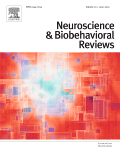Document type : scientific article published in Neuroscience & Biobehavioral Reviews
Authors: Neele Dirksen, Jan Langbein, Lindsay Matthews, Birger Puppe, Douglas Elliffe, Lars Schraderd
Preview: Typically, cattle urinate and defecate with little or no control over time and place. The resulting excreta contributes to a range of adverse effects on the environment and the animals themselves. These adverse effects could be substantially ameliorated if livestock could be toilet trained. Toilet training requires an animal to suppress impending voiding (a reflexive-like behavior), move to a latrine (voluntary behavior) and reinitiate voiding. Here, we review the neurophysiological processes and learning mechanisms regulating toileting. The suppression and initiation of voiding occur primarily via the coordinated activity of smooth and striated anal and urinary sphincter muscles. The autonomic and somatic nervous systems, along with central processes, regulate these muscles. In several mammalian species, voluntary control of the sphincters has been demonstrated using classical and/or operant conditioning. In this review, we demonstrate that the neurophysiological and behavioral regulation of voiding in cattle is likely to be similarly conditionable. The management of excreta deposition in cattle could have major benefits for reducing livestock greenhouse gas emissions and improving animal health/welfare.




